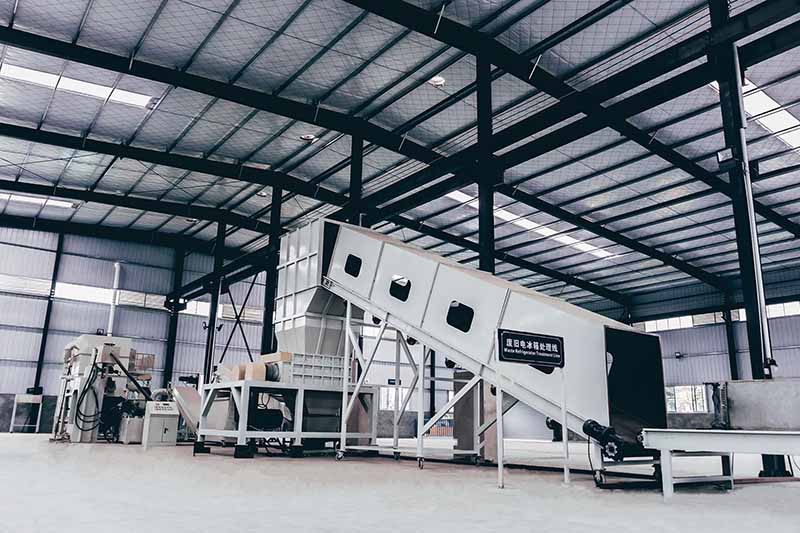
Equipment Usage
This equipment is used by Jiangxi Mingxin Metallurgical Equipment Co., Ltd. to crush and sort the waste refrigerators with advanced technology. It can effectively separate copper, iron, aluminum, plastic, foam, etc., and includes air purification equipment and foam volume reduction equipment. The whole process is automatically completed, with the characteristics of environmental protection, safety, strong processing capacity, and high recovery rate.
The Mingxin refrigerant recovery machine uses a compressor to recover refrigerant into the equipment for filtration, drying, and separation of lubricating oil. It is pressurized by the compressor to form a gaseous refrigerant and cooled into a liquid in the condenser. It is then stored in a working tank for reuse.
Equipment Installation
When installing the equipment, pay attention to adjusting the height of each foot to keep the equipment level. The installation location should pay attention to the necessary space for equipment operation, maintenance, and repair.
Device Images
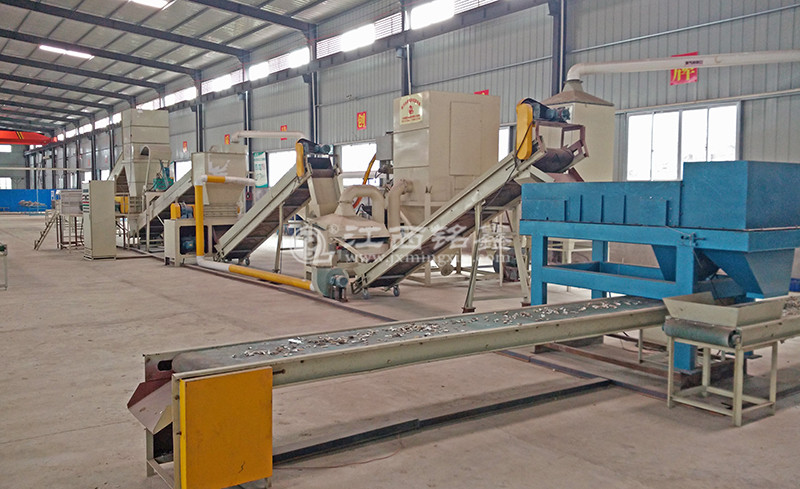
Final Material
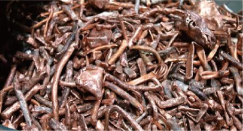
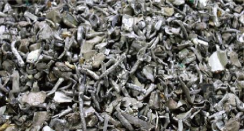
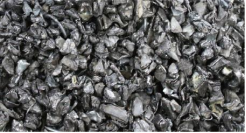
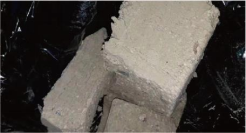
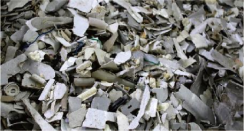
Copper Aluminum Iron Foam Plastic
Equipment Operation
Place the discarded refrigerator on a rolling dismantling table, remove refrigerant such as Freon, recover lubricating oil, disassemble the compressor, condenser tube, door magnetic strip, electronic products, motor, etc.
The refrigerant passes through the refrigerant recycling machine to recover Freon. First, turn on the high and low pressure valves, open the recycling valve switch, and then turn on the recycling switch. When the recycling light is on, the recycling process begins. After the recycling is completed, the indicator light will turn off. After the recycling is completed, close the recycling switch and the recycling valve switch.
The outer shell is fed into the primary crusher by a conveyor belt for initial crushing. When additional force is needed for compression, the crushed material can be pressed into the primary crusher by using a hydraulic arm for crushing.
The initially broken material contains dust, which is then fed into the secondary crusher by a covered conveyor belt for crushing.
The material that has undergone secondary crushing directly enters the lower tertiary crusher for fine crushing.
After being finely crushed, the material is transported by a covered conveyor belt to a vibrating sorting bed for sorting out insulation cotton dust, iron, non iron accumulation, plastics, etc.
The suction hood set above the sorting bed sucks in dust such as insulation cotton and sends it into the dust collector through an air compressor. The insulation cotton is discharged from the outlet below the dust collector.
Above the dust collector, it is connected to the air purifier. The gas inside the dust collector is introduced into the air purifier through an induced draft fan, and the purified gas is discharged into the atmosphere.
A conveyor belt is installed below the discharge end of the vibration sorting machine. The conveyor belt sends materials to the high intensity magnetic drum at the top of the conveyor belt for sorting. The sorted iron metal is discharged and collected from the iron metal discharge port, and the mixture of non iron metal and plastic obtained after sorting is made up of a mixture of non iron metal and plastic.
The mixture of non-ferrous metals and plastics is fed into the eddy current separator through the discharge port of the non-ferrous metal and plastic mixture, and then separated into non-ferrous metals, plastics, and impurities by the eddy current separator.
Plastic and impurities enter the manual sorting conveyor belt through the plastic and impurity discharge port, and are further sorted manually.
The non-ferrous metals (mainly copper, aluminum, and other metals) sorted by the eddy current sorting machine are transported by the conveyor belt through the non-ferrous metal discharge port and manually sorted by copper, aluminum, and other metals.

 Waste Refrigerator Recycling Plant-Products-Jiangxi Mingxin
Waste Refrigerator Recycling Plant-Products-Jiangxi Mingxin